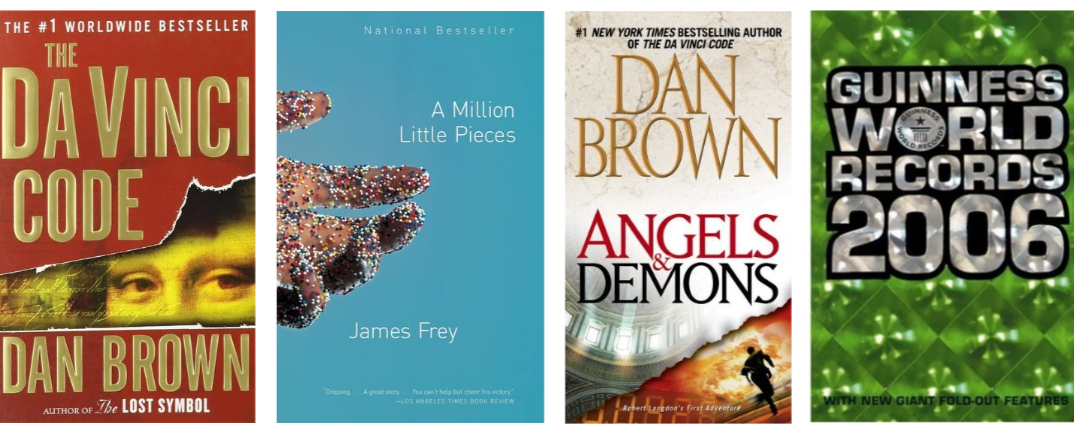Yesterday we celebrated I Read Canadian Day, the national celebration of Canadian books for young people. This event is a perfect time to take the pulse of the performance of books by Canadian contributors in the market. (We define a Canadian contributor as an author, illustrator, translator, or editor (in the case of an edited collection of material) who is a Canadian citizen or a permanent resident of Canada.)
We're excited to share our discoveries in a three-part blog series, with this being the second instalment. If you haven't already, be sure to check out the first blog post. In this post, we’ll focus on the sales and library circulation of Juvenile titles by Canadian contributors.
What Canadian book consumers are saying
According to unreleased data from our Canadian Book Consumer survey, during the first half of 2023 library users checked out books for:
A young child aged 0-3 — 3%
A young child aged 4-7 — 8%
A middle grade child aged 8-12 — 10%
A young adult aged 13-17 — 7%
From our Canadian Leisure & Reading Study 2022, we learned that even though the survey is fielded among adults (Canadians over the age of 18) there's a substantial interest in reading and listening to children's and young adult books among Canadian adults.
Respondents said they read children’s books in these formats:
Print books 16%
Ebooks 10%
Audiobooks 13%
Respondents said they read young adult books in these formats:
Print books 18%
Ebooks 16%
Audiobooks 14%
How is this interest reflected in the sales and circulation of Juvenile titles by Canadian contributors? Let’s find out with the help of SalesData and LibraryData.
Buying Juvenile books by Canadian contributors
As seen in the graph below, the sales of Canadian-authored or -illustrated Juvenile books have been slowly decreasing over the last six years (11%). That said, the sales of Juvenile Fiction titles increased by 2% during this same period. Juvenile Non-Fiction titles, on the other hand, saw a significant decrease in sales during the last six years (40%).
Sales of Canadian Juvenile, Juvenile Fiction, and Juvenile Non-Fiction titles
But just how big is this market? Let’s take a look at the market share of these titles.
Juvenile titles by Canadian contributors represented a whopping 37% of the sales of all Canadian print books in 2022. But this category has two subcategories with completely different market shares: Juvenile Fiction represented 29% of all the sales of Canadian print books in 2022 and Juvenile Non-Fiction represented 8%.
What themes are capturing readers' attention more then they used to? The subcategories with the most significant increases in sales from 2017 to 2022 for Canadian Juvenile titles are:
Juvenile / Juvenile Non-Fiction / LGBTQ+ — 54,564%
Juvenile / Juvenile Non-Fiction / Disabilities — 12,462%
Juvenile / Juvenile Non-Fiction / Comics & Graphic Novels — 10,539%
Sales of Canadian Juvenile Non-Fiction LGBTQ+, Disabilities, and Comics & Graphic Novels titles
As shown the graph above, Juvenile Non-Fiction / LGBTQ+ titles saw the highest growth from 2019 to 2020 with sales increasing by 21,500%, the upward trend continued when sales increased by 108% and 235% in 2021 and 2022 respectively. Sales of Juvenile Non-Fiction / Disabilities titles, increased most significantly from 2020 to 2021 (29,050%). As for the sales of Juvenile Non-Fiction / Comics & Graphic Novels titles, they saw the highest growth from 2017 to 2018 (1,267%) and from 2021 to 2022 (313%).
Borrowing Juvenile books by Canadian contributors
The library circulation of Canadian-authored or -illustrated Juvenile books tells a different story, though the data we’re about to share should be analyzed keeping these three things in mind:
LibraryData started tracking library circulation for a select group of library systems and branches in 2019.
Library systems and branches are continuously added to the reporting panel.
A significant number of public libraries were closed due to the COVID-19 pandemic for a good part of 2020, 2021, and 2022.
Keeping in mind these caveats, the growth in popularity of Juvenile titles by Canadian contributors in public libraries is undeniable.
From 2019 to 2022, the loans of Canadian Juvenile books increased by 316%. Canadian Juvenile Fiction loans alone saw an increase of 315%, and despite Juvenile Non-Fiction titles having a much smaller share compared to Juvenile Fiction — 9% vs. 41% of all the loans of print books by Canadian contributors, the loans for these books saw an increase of 321%.
Loans of Canadian Juvenile, Juvenile Fiction, and Juvenile Non-Fiction titles
What can we learn from looking at the renewals rates of Juvenile titles with a Canadian contributor? As shown in the graph below, renewals saw similar increases compared to loans. The Juvenile, Juvenile Fiction and Juvenile Non-Fiction categories saw increases in renewals from 2019 to 2022 of 307%, 326%, and 254% respectively.
Renewals of Canadian Juvenile, Juvenile Fiction, and Juvenile Non-Fiction titles
At the library, the categories that saw significant increases in popularity are:
Juvenile / Juvenile Fiction / Diversity & Multicultural — 13,370% increase in loans
Juvenile / Juvenile Non-Fiction / LGBTQ+ — 4,595% increase in loans
Juvenile / Juvenile Nonfiction / Activism & Social Justice — 3,950% increase in loans
Loans of Canadian Juvenile Fiction / Diversity & Multicultural, Juvenile Non-Fiction / LGBTQ+, and Juvenile Non-Fiction / Activism & Social titles
As shown in the graph above, Juvenile Fiction / Diversity & Multicultural titles saw the highest increase in loans from 2020 to 2021 (2,536%). The same is true for Juvenile Non-Fiction / LGBTQ and Non-Fiction / Activism & Social Justice books, when loans from 2019 to 2020 increased by 595% and 1,159% respectively.
Reading Juvenile titles
Here are the top selling and top borrowed Juvenile titles by Canadian contributors from 2019 to 2022.
Top selling
Love You Forever by Robert Munsch 🍁, illustrated by Sheila McGraw 🍁
Dear Girl, by Amy Krouse Rosenthal and Paris Rosenthal, illustrated by Holly Hatam 🍁
The Paper Bag Princess by Robert Munsch 🍁, illustrated by Michael Martchenko 🍁
Sharon, Lois and Bram's Skinnamarink by Sharon Hampson 🍁; Lois Lillienstein 🍁; Bram Morrison 🍁; illustrated by Qin Leng 🍁
Smelly Socks by Robert Munsch 🍁, illustrated by Michael Martchenko 🍁
Top borrowed
Adventure Time series by Pendleton Ward, Kate Leth 🍁, et al.
Jon le Bon series by Alex A. 🍁
Sparks! series by Ian Boothby 🍁; illustrated by Nina Matsumoto 🍁
Sonic the Hedgehog series by Ian Flynn 🍁
We’ve reached the end of this post. Stay tuned for an upcoming instalment about the sales and library circulation of Young Adult books by Canadian contributors and sign up for the research newsletter to stay on top of the latest trends.
Did you know you can generate your own reports to stay updated on market trends? Explore our tutorials on SalesData and LibraryData to learn how to leverage these tools effectively.




















The most circulated Canadian books of 2025.